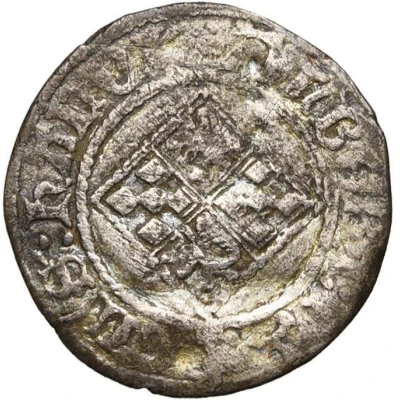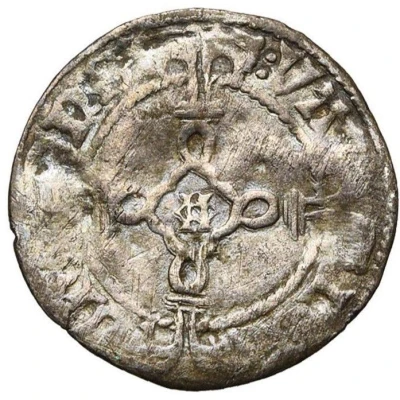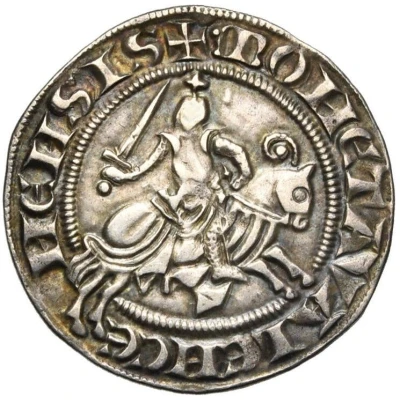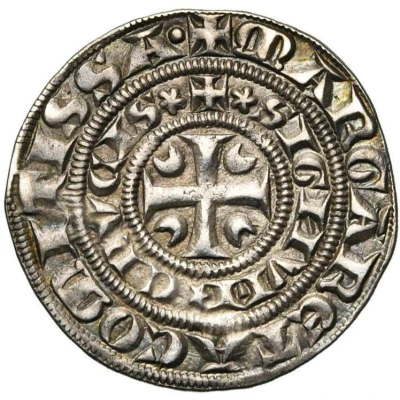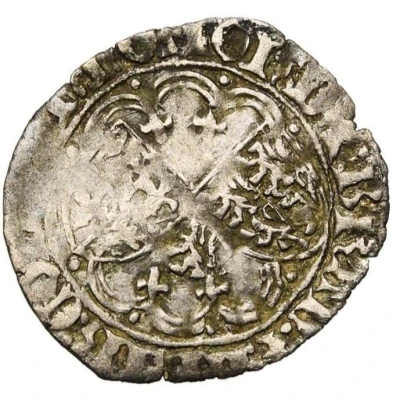
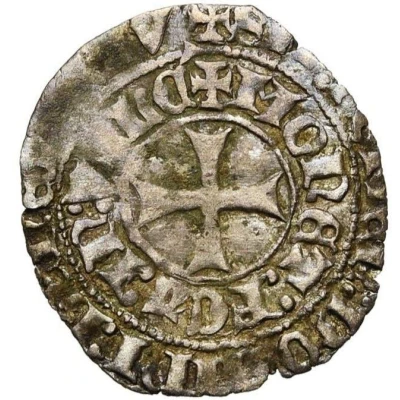

© Jean Elsen & ses Fils s.a.
½ Groat "Drielander" - Jacqueline and John IV of Brabant ND
| Billon (.320 silver) | 1.1 g | - |
| Issuer | County of Hainaut (French States) |
|---|---|
| Countess | Jacqueline of Bavaria (1417-1433) |
| Count | John of Brabant (1418-1425) |
| Type | Standard circulation coin |
| Years | 1420-1421 |
| Value | ½ Groat |
| Currency | Gros (1071-1506) |
| Composition | Billon (.320 silver) |
| Weight | 1.1 g |
| Shape | Round (irregular) |
| Technique | Hammered |
| Demonetized | Yes |
| Updated | 2024-10-04 |
| Numista | N#313842 |
|---|---|
| Rarity index | 100% |
Reverse
Short cross pattée with double legend surrounding
Script: Latin
Lettering:
✠SIT noMEn DOMInI BEnEDICTVM
✠MOnETA: FCA: In: VALC
Translation:
Blessed be the name of the Lord
Coinage made in Valenciennes
Comment
Jacqueline of Bavaria ascended the throne as Countess of Hainaut, Holland and Zeeland when her father (William VI) died in 1417. A succession struggle was fomented in Holland by the municipal faction, who preferred to have John III, the Prince-Bishop of Liege. This conflict came to be known as the Hook and Cod wars.In 1418, Jacqueline married John IV, Duke of Brabant. In 1420 John promulgated a monetary union between Brabant, Hainaut and Holland, with identical types to be minted in Brussels, Valenciennes and Dordrecht. These types were nicknamed "Drielander" for this monetary union.
The Hainaut types are identified by the lion between the shields obverse (Brabant has fleurs-de-lis) and the interior legend reverse.
Interesting fact
The ½ Groat "Drielander" coin from the County of Hainaut (French States) is interesting because it features the effigies of both Jacqueline and John IV of Brabant, who ruled the region together in the early 15th century. This coin is a rare example of a coin that was issued jointly by a married couple, making it a unique piece of numismatic history.
